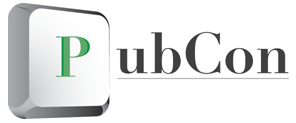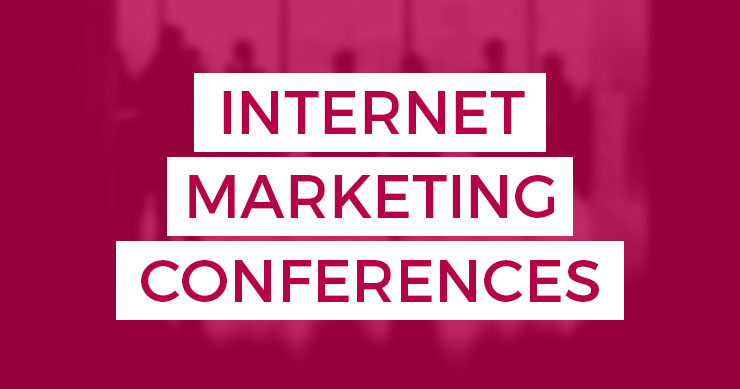 And before we know it, PubCon is over. Well, it’s not quite over, but by the time you read this it will be. I’m having to duck out early to make my flight. After taking a meeting, I worked in the press/speaker ready room. Note to self: Spend more time in the ready room at future conferences. Sitting in this room, I’ve learned nearly as much from the conversations as I did in all the sessions I attended. I’ve been sworn to secrecy, though. Apparently, the Vegas rule applies to the PubCon ready room. Sorry.
And before we know it, PubCon is over. Well, it’s not quite over, but by the time you read this it will be. I’m having to duck out early to make my flight. After taking a meeting, I worked in the press/speaker ready room. Note to self: Spend more time in the ready room at future conferences. Sitting in this room, I’ve learned nearly as much from the conversations as I did in all the sessions I attended. I’ve been sworn to secrecy, though. Apparently, the Vegas rule applies to the PubCon ready room. Sorry.
What I can tell you is that the second day of PubCon was just as great as the first, and that if you didn’t make it to Austin, you should definitely try to get to PubCon Vegas in November. PubCon South has been a great bunch of people sharing awesome information. It’s also been nice to see people full size, and not just as tiny Twitter avatars. Now, to the reason you’re here—the PubCon day two summary.
The Search Industry – A View From Inside and Out
The day began with The Search Industry – A View From Inside and Out, with Joe Laratro asking questions and getting insider answers from Daniel Boberg, whose background is with goto.com, Overture, and Yahoo!, and Tim Mayer, who worked for five search engines over 13 years.
Joe Laratro: Regarding mining social media data, what’s the future implication for search?
Daniel Boberg: From a marketing standpoint, what’s exciting is to look at the intent—what does the consumer want when they’re searching for something? Marketers have been able to change their message based on the social media conversation that’s happening. You can mine social media data with tools, and then add it to search data, and that will give you a good perspective to take to the advertiser.
Tim Mayer: For me, it’s been interesting to see Facebook line up with Bing, and Twitter lining up on the Google side. Twitter wanted to license data, and license it to search engines, which is the revenue model they started with. Bing owns the Facebook string, which gave them an advantage. Google has allowed Twitter to monetize their real time search page. I would never think of Google outsourcing their monetization. For Google to give it up, they must be getting something. The terms haven’t been disclosed, but they must be getting unique data from Twitter.
JL: There’s been quite a bit of coverage in the press lately about search. In fact, the other day, a kid at a birthday party told me about Google algorithm change, which he’d heard about on CNN. In the social media market, how does tech move with the trend, and is the Internet going to look like a content farm?
DB: The hottest topic right now is the change in 12 percent of Google’s results, which is huge. Search engines in general aren’t as connected with public as they should be. Two years ago, this crowd would have said there were issues with search results. The change was a long time coming. At the same time, they won’t get it right out of the gate, and there will be issues. It will continue to be a hot topic, and the algorithm will continue to change.
TM: One of the issues is there aren’t many incentives for people to create high quality content, where people will be rewarded for creating high quality content, and not just for writing articles on topics they have no idea about. Content farms have to evolve to create higher quality content.
JL: Is Bing copying Google? Does Bing have a valid argument, or did they get caught with their hand in the cookie jar?
TM: Bing had a monolithic approach. If we don’t have results, we’ll see if Google does. Search engines use zero results pages as metrics. In terms of optimizing this metric, were probably comparing to Google, and one way to compare is to ping Google. It was very easy approach and Google figured it out; Google accused Bing of using their data, and tried to expose Bing for something they didn’t do. They tried to focus on Bing instead of improving their own search results.
DB: Google’s engineers were offended by this happening or they wouldn’t have brought it up. Bing’s results are still quite a bit different from Google’s. They’re still different engines.
JL: You’re outside the search engines now. We want to know, how do you feel about SEO community?
DB: Mostly apathy. They don’t really know about SEO people. How many people from Google are here today? You have your day job, and it’s difficult to focus on the community and what’s going on out there. The first conference I ever attended in San Francisco, I realized Yahoo! was a huge source of traffic. Yahoo was getting ripped on, and no one from yahoo was there. I decided to make a presence in the community. Search engines are too slow to respond to market trends.
TM: I think relationships I’ve developed at conferences are very valuable when we try to make changes. I’d get feedback from people, I had publisher perspective, and having interaction, I found industry groups were not that useful in terms of pushing agendas forward, especially ones with search engines on them. There were always one or two engines that wanted to move something forward, and one that didn’t. There were never a lot of incentives for search engines to work together. Site maps and other common initiatives were where we worked together, but not much else.
JL: There’s sentiment out there that JC Penney was allowed to get away with the paid links because they’re a big company. Are big companies are treated differently?
DB: Search engines employ thousands of people. There are thousands of people in all the departments, plus the executive team. Where it gets interesting is the sales team might know an engineer or two. Everyone wants the engine to do what it’s supposed to do and not be influenced, but it may happen from time to time with sales input and influence. I’d be very surprised if Google’s finance people weren’t asking how a 12% change was going to affect bottom line.
TM: There’s also a risk because if someone comes to Google and searches for JC Penney and nothing comes up, they’re going to go to Bing. There’s no user expectation with smaller sites. Most people will think if Penney’s ranks high for something, it’s because they’re Penney’s. No one thinks anything of it. If it was running-shoes.com, it would stand out more.
The State of Local Search
My first session of the day was The State of Local Search with speakers Eric Bramlett, Brian Combs, Michael Dorausch, and Gib Olander, and moderator Chris Tolles, all of whom have a ton of experience with local search, either as business owners, or with agencies that provide local search services (among others) to clients.
Chris started things off by sharing that Google thinks about 20% of all searches have local intent. Considering the volume Google handles every day, that’s a lot of local searches.
Gib’s presentation explained how the act of searching for information has evolved, starting with libraries and phone books, and progressing to the Internet and Google, both on desktops and mobile phones. People mostly search for what and where, but social networking has added other layers of who and when. Yelp, Facebook, and Foursquare are perfect examples of this.
One of the main pieces of advice Gib offered was to ensure that your business information is uniform across all platforms. If it’s fragmented, people aren’t going to be able to find you with regularity. Then make sure your information is discoverable. There are 6,000 location-based apps for the iPhone alone. Control your listings as much as possible to avoid fragmentation, and to pool your data, and your results.
Facebook and Foursquare check-ins are growing. Foursquare saw 3400% growth in 2010, and 60 % of mobile internet usage is spent on social networking. Be sure to take advantage of these avenues. Enable your users to create and share great discovery content. If your identity isn’t established, you don’t exist.
Up next was Brian, who said that local search is at a crossroads. He thinks what happens over the next few months will determine what happens over the next few years. Last October Google began blending local and traditional algorithms as part of an anti-spam effort. It’s still changing. He’s seeing less spam, but he doesn’t think Google even knows where things are going to go.
Google and Yelp are still fighting because Google is using Yelp’s data in the SERPs, and diverting traffic. Google is taking an all or nothing stance. Whether Yelp is strong enough to go it alone remains to be seen.
According to Brian, Google support is still horrible. Reporting data hasn’t been updated since February 21, 2011, and some data seems to come and go. One day, Google Places business names are there; the next, they’re gone. There’s actually a help forum for Google Places, which most people may not realize because it’s not worth much, Brian says. Lots of people post, but it’s rare to get any sort of response from Google.
One example Brian gave of incorrect Google listings is the University of Montana. Several wrong phone numbers are listed in Google Places, including Campus Security. If a student needs to call security, they’re going to get Family Housing instead. “Does someone have to DIE to get Google’s attention?!” Brian got a little animated.
Chris interjected: “That’s the most dramatic thing I’ve ever heard at PubCon.”
Now I’m wishing I had tweeted that!
Anyway, Brian went on to say that one of the most important features of local search is reviews, but are they reliable? In October 2009, the FTC said it would get tough on fake reviews. I know, you’re shocked, right? Surely, businesses don’t write reviews of themselves to rank or get customers. Sixteen months later, the FTC still hasn’t done anything.
On February 11, 2011, the Today show ran an exposé on fake reviews, so the FTC may sit up and take notice this time. You don’t want to be the company the FTC makes an example of.
Real estate broker and business owner Eric Bramlett stated that 70% of people look for local information on the Internet before anywhere else, and they usually go straight to Google. Therefore, the most effective use of your time is to focus on Google, specifically, Google Places.
There is tremendous interest in local search, as evidenced by companies like Groupon, for which Google offered $6 billion last November, and got turned down flat. The response? Google launched its own competitor, but it doesn’t seem to have slowed Groupon down.
Eric says the best thing for business owners is to go hyperlocal. For example, a search of “Austin real estate” returns nearly two million results. A search for “Allandale real estate” (an Austin neighborhood), comes back with less then two thousand. There is a direct relationship between hyperlocal and conversion. Hyperlocal is the way to go.
The local search session was rounded out by Michael, who is a Los Angeles chiropractor by choice, but has learned search out of necessity. He says business owners either need to learn about local search and social media, or hire someone who does in order to use them to their full advantage.
Michael says we need to realize that the people we’re trying to reach are just like us. We use computers, mobile phones, search engines—and so does everyone else. Another thing to realize is that someone who searches for something from their desktop is planning. Someone who searches from their mobile device wants instant gratification.
It comes down to quality versus location for mobile phone users. The best option may lost out to the nearest option. Michael said, “I think by this time next year, online reviews will be viewed the same way content farms are today.” He thinks people will shift back to word of mouth as review spam grows and quality declines. Hmm…that’s interesting. What do you think?
Content and Copywriting, and Information Architecture
The session I’d really been looking forward to as a content manager, writer and editor was Content and Copywriting, and Information Architecture. The panel consisted of Brian Clark, (aka Copy Blogger), Kristine Schachinger, Alison Zarrella, and Dawn Wentzell. Aaron Shear moderated.
Alison started off with a very informative presentation called “Developing and Distributing Content Through Social Media: How Facebook Can Help Fuel Your Content Strategy.” Say that three times, fast. Alison explained how Facebook can be a superior marketing tool because Facebook pages allow you to have tabs, and longer content than Twitter. It’s basically like mini content from your website. Facebook apps also allow you to promote external content, and drive traffic to your site. You can use your Facebook page to offer exclusive content, something people can’t get anywhere else. It doesn’t necessarily have to be a free product; it can be a news scoop or a discount. Just keep the content engaging.
She suggests crowdsourcing your content. Listen to comments and complaints from your users, and then respond, first via a status update on Facebook, and then go on to make it a blog post. Just remember when engaging your followers to talk about your brand; don’t just rely on a heavy selling message that says “buy.”
Driving engagement and interaction are important parts of content strategy. The more interaction on your page, the higher it ranks, staying in members’ news feeds longer. In addition, by using keyword-rich content on your pages, you’ll not only rank higher within Facebook, but organically as well. According to Alison, a Facebook page is key to a social media content strategy.
Brian presented “Content: The Centerpiece of Your Social Media Marketing Strategy, ” and made the overall point that the number one rule of online marketing is to give people what they want. Sounds simple, right? Yet so few people actually do this. People don’t want in-your-face advertising. They want quality content.
What makes something go viral? People sharing it. It’s value-based sharing. The social media space is based on this principle. Sharing starts with response. Instead of trying to sell a product right out of the gate, sell the response. Your call to action shouldn’t necessarily be “buy;” it should be whatever response you need from the user to get them to the point where they want to buy.
Brian explained that he follows the 5A approach to social media marketing with content:
- Authenticity: This is the most overused and misunderstood buzz word in internet marketing. The audience has to find you authentic in order for you to get the response you want from them. Companies have a problem because they don’t want to offend anyone, so they play it safe, and also don’t attract anyone. You can’t just regurgitate what you think people want—they’ll go somewhere else.
- Attention: The hooks. This would be called the angle for reporters. Hooks are the way you marry relevance with something entertaining, which is called the fascination. It makes people have to act on it now, and hopefully share it, bookmark it, whatever action you’re going for. Brian used a previous post title from his own site: 5 Things Depeche Mode Can Teach You About Effective Online Marketing. In this example, Depeche Mode is the fascination; effective online marketing is the relevance. [This is quite possibly the best method for writing blog post titles I’ve ever heard. Plus, I just love Depeche Mode.]
- Authority: You need to be the likable expert.
- Action: This is the conversion. One way to accomplish this is through e-mail. Don’t let anyone tell you email is dead. Groupon would argue with you on that point. You’ve earned the trust; now you need to make money.
- Acceleration: Build a media asset with independent value. Always build your own property. Don’t spend all your time on other people’s property.
Kristine’s information architecture presentation was short and to-the-point. She had some really great tips. First, make sure you understand what information architecture is.
Next, do keyword research. Write a content outline, and a business goal outline. Kristine said there are three ways to organize content: singularity, similarity, and specificity. Keep in mind that users should reach their desired information within three clicks of the home page, no more than four. Anymore than that, and they’ll leave the site, possibly never to return. Don’t make users dig for information.
Make sure you have all the relevant departments in your company involved in site creation, from marketing to IT to design. Navigation is your hierarchy. Don’t build a Web site like an app—not even your mobile site.
Building site architecture should be hard. If it’s easy, your site is either very small, or you’re just doing it wrong.
Finally, Dawn presented Coordinating Content Creation, from an agency perspective. There are a lot of things to manage in order to get content up. Good content is the key to effective SEO.
- Assessing your resources: You have to help your client create content. Find out what properties are available. This can mean a blog, company news, resources/downloads section, FAQs, an e-mail list, or social media profiles. Asses whether they’re up to snuff, and if not, work with the client to get them that way. If the client is going to be creating content, or doing any development to get the properties where they need to be, give them a deadine. If the client is going to create the content themselves, train them on the use of SEO best practices in their writing, focusing on the value of keywords and calls to action.
- Make a plan: This means creating an editorial calendar, which basically just lists what you want to publish, and when. There are several things to use when creating content, such as client activities, industry events, holidays, seasons, product launches, charity events, and the like. Wikipedia has a list of holidays from around the world listed by month. Dawn said she hates recommending Wikipedia, but this is one thing they actually do well. Remember to work on content at least a month to month and a half in advance in order to rank. You don’t want to publish a post on Halloween the day before Halloween.
Find out whether the client has to approve everything. The client approval process can slow things down. If they have to approve everything, find out how long it will take. Give the client a deadline to retain relevance. If you write a timely post a month in advance, but the client takes three weeks to approve it, you’ve lost valuable ranking time.
Dawn’s last piece of advice is to get to work!
That’s the kind of advice I like. Simple, clear-cut, to-the-point. We all know we could read blogs all day, tweet and retweet all day, and prepare to begin to start to get things done. The worst thing you can do is let yourself get caught up in analysis paralysis. So although PubCon is over, none of us are anywhere near done. It’s time to get to work.


